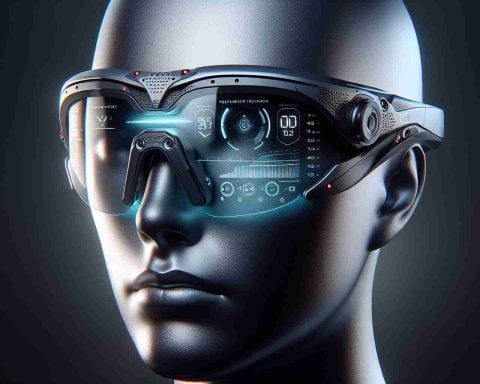Exciting developments are underway in the world of augmented reality as Samsung collaborates with Google to create groundbreaking XR glasses expected to hit the market in the third quarter of 2025. Upcoming reports detail that the glasses will feature similarities to the Ray-Ban Meta smart glasses, promising a blend of advanced technology and stylish design.
Research findings from experts at Wellsen XR provide fascinating insights into Samsung’s next leap into wearable tech. The technology giant plans to produce 500,000 units of these highly anticipated glasses initially. Powered by Qualcomm’s AR1 chipset, just like the Ray-Ban smart glasses, the new XR glasses from Samsung aim to set new standards.
Looking into the hardware under the sleek exterior, Samsung’s glasses are expected to house a 12MP Sony IMX681 camera coupled with a 155 mAh battery. Weighing in at 50 grams, they are comparable to Ray-Ban’s offerings, though slightly heavier. Despite these specs, the absence of a display suggests a focus on lightweight and comfort.
The smart glasses promise intriguing features including AI support for various functions such as “payment,” QR code scanning, gesture recognition, and human recognition. This implies a robust AI integration aimed at enhancing user experience.
While Samsung is advancing quickly in the smart glasses field, Meta continues to push boundaries with its holographic AR glasses prototype, Orion. Meanwhile, Apple is only beginning its journey into the smart glasses realm, with their initial steps being cautious but potentially groundbreaking if their plans see fruition.
The Future of Vision: How Upcoming XR Glasses Could Transform Daily Life
The world of augmented reality (AR) is on the brink of a revolution, as technological giants like Samsung and Meta race towards the development of the next generation of smart glasses. While recent announcements highlight the collaboration between Samsung and Google, there are many lesser-discussed aspects that have the potential to influence the future of AR technology and its integration into daily life.
Impact on Human Interaction and Daily Activities
With the integration of AI capabilities such as gesture recognition and human recognition, Samsung’s new XR glasses promise to enhance the way we interact with both technology and each other. Imagine a world where you can seamlessly pay for goods, gain insights about people in your vicinity, or receive real-time information overlays—all without reaching for your phone. This level of integration can redefine social norms and reshape communications.
Advantages of XR Technologies
These technological advancements offer numerous advantages. One potential benefit is the efficiency in tasks. The ability to scan QR codes, identify individuals, or make transactions with just a glance or a gesture can save time and streamline numerous everyday activities. Moreover, such technology empowers users by providing an always-available personal assistant, potentially improving accessibility for disabled users who may find modern smartphones cumbersome.
Potential Challenges and Disadvantages
Despite their promise, XR glasses also present some challenges. Privacy concerns are paramount; the capability to recognize people and capture images might be unsettling for individuals concerned about surveillance and data security. Moreover, the lack of a traditional display could limit the glasses’ functionality, relying instead on audio cues or smartphone integration, which could detract from the immersive AR experience.
Controversies and Ethical Concerns
A key question arises: How will society manage the ethical implications of such pervasive technology? The balance between convenience and privacy will be scrutinized heavily. Additionally, there’s the issue of digital divide—will such advanced innovations be accessible to all, or will they further exacerbate existing inequalities?
Comparative Developments in the Tech Industry
While Samsung and Meta lead the charge in this space, Apple’s entry into the smart glasses market could set a precedent. Known for its refined design and consumer-friendly interfaces, Apple’s cautious but strategic approach could revolutionize smart glasses, potentially influencing competition and consumer expectations.
Industry spectators must also consider Qualcomm’s AR1 chipset, which is empowering both Samsung’s and Meta’s efforts—a testament to the crucial role of chipset manufacturers in this technological race.
For further insights into AR technology and its future, explore resources from tech giants such as SAMSUNG, GOOGLE, and META.
As AR technologies evolve, the overarching question remains: Will XR glasses ultimately redefine human interaction, or will they remain a niche gadget? Only time will tell how these exciting developments will unfold, shaping the future of how we perceive and engage with the world around us.





















